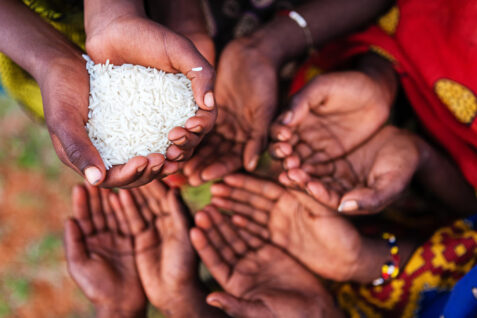
Doctors beg for food as 40% of Tigrayans wallow in “in extreme food shortage” in Ethiopia
Nearly 40% of the population in Ethiopia’s war-torn Tigray region are suffering from “extreme food shortage”, according to the United Nations. The latest food assessment published on Friday (January 28) by …
Nearly 40% of the population in Ethiopia’s war-torn Tigray region are suffering from “extreme food shortage”, according to the United Nations.
The latest food assessment published on Friday (January 28) by the World Food Programme (WFP), says a total of 4.6 million people, or 83% of the population of Tigray, are “food insecure”, while two million (nearly 40%) are “severely food insecure”.
There are also reports suggesting that the situation has forced some of the nurses and doctors at the biggest hospital in the Tigray region to beg for food to feed themselves.
One of the medics said, claiming that, they have not been paid for eight months pushing them to find alternative means of supporting their families.
The report which is the first reliable food security assessment since a UN report more than six months ago further reveals the humanitarian catastrophe in northern Ethiopia, where pro-government forces and rebels of the Tigray People’s Liberation Front (TPLF) have been fighting each other since November 2020.
“Families are exhausting all means to feed themselves, with three-quarters of the population using extreme coping strategies to survive,” the WFP said in a statement.
“Diets are becoming poorer as food supplies are depleted and families are relying almost exclusively on cereals while limiting the portions and number of meals they eat each day,” the UN agency added.
It also warns of growing hunger in the neighbouring regions of Amhara and Afar.
“WFP is doing everything in its power to ensure that our food and medicine convoys cross the front lines,” Michael Dunford, WFP’s regional director for East Africa, said in the statement.
“But if hostilities persist, all parties to the conflict need to agree to a humanitarian pause and corridors so that supplies can reach the millions of people besieged by hunger,” he added.
An earlier report by the Associated Press stated that Nearly 1,500 people died of malnutrition in part of Ethiopia’s Tigray region over a four-month period last year.
Tigray, a region of six million people, has been under what the UN calls a “de facto blockade” for six months.
Last week, the UN announced that food distributions in Tigray had “reached an all-time low”.
On Friday, the UN Office for the Coordination of Humanitarian Affairs (OCHA) announced that international humanitarian NGOs operating in the region had run out of fuel since 24 January, being forced to “deliver the few remaining humanitarian supplies and services on foot, as far as possible”.
Local organisations are also struggling to reach people in need due to fuel and cash shortages, Ocha added.
The pre-war government of Tigray said this week it had recorded 369 deaths of children under five attributed to the blockade, up from nearly 200 in November. This figure could not be independently verified.
Two weeks ago, the Director-General of the World Health Organization (WHO), Tedros Adhanom Ghebreyesus, was accused by the Ethiopian government for accused “misconduct“after he criticized conditions in the Tigray region.
























